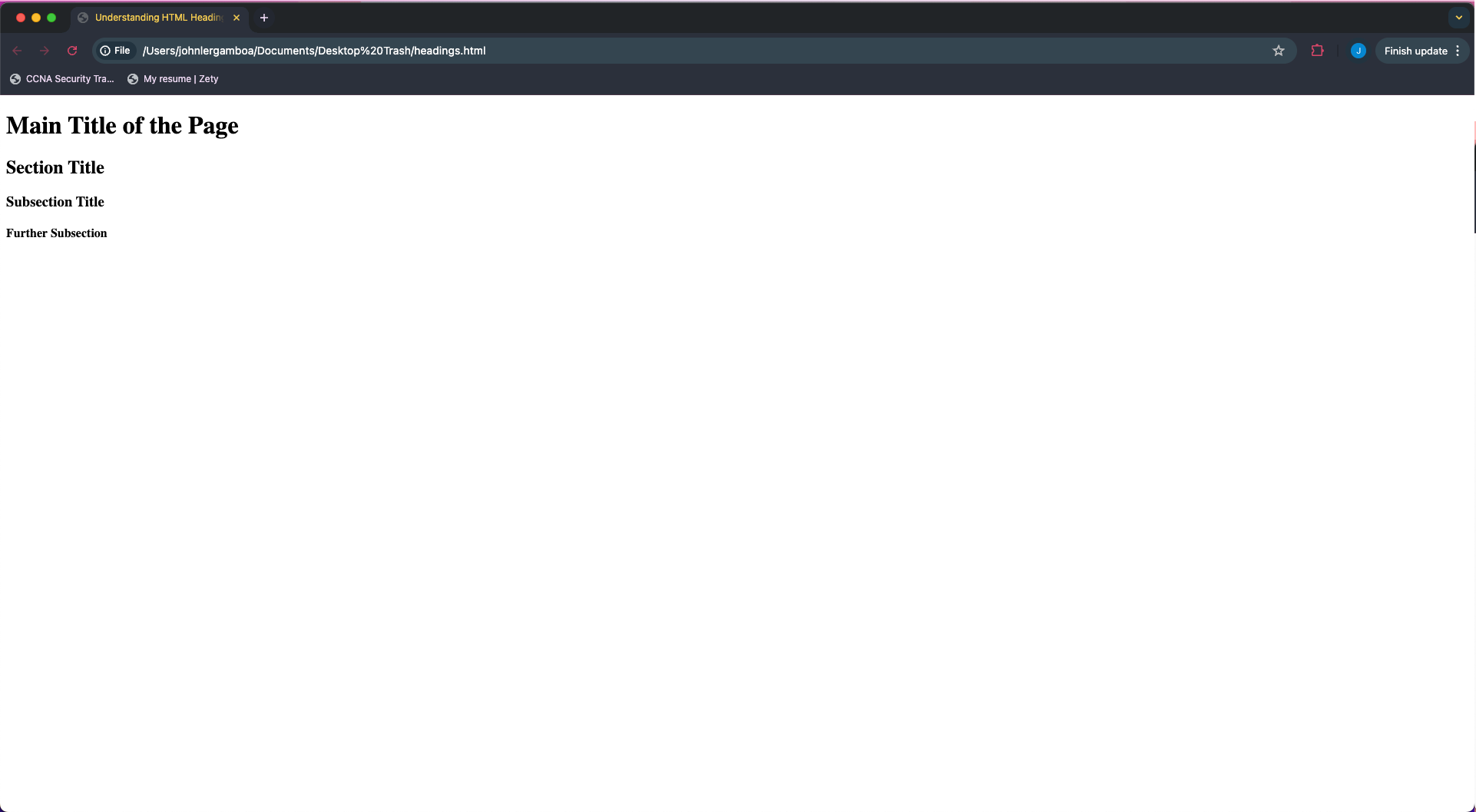Headings
Understanding HTML Heading Tags
HTML Heading Tags are used to define headings on a webpage. They range from <h1> to <h6>, with <h1> being the most important (or highest level) and <h6> being the least important (or lowest level). Headings help to structure content, making it easier for users to read and search engines to understand the hierarchy of information.
Key Points to Cover:
-
Purpose of Heading Tags:
- Explain how heading tags create a hierarchy of content on a webpage.
- Discuss their importance in improving readability and accessibility.
-
Different Levels of Headings:
<h1>: Typically used for the main title or most important heading of a page.<h2>: Used for major section titles within the content.<h3>to<h6>: Used for sub-sections and further breakdowns within sections.
-
Best Practices:
- Always start with
<h1>and follow a logical order down to<h6>. - Avoid skipping heading levels (e.g., jumping from
<h1>to<h4>without using<h2>and<h3>). - Use only one
<h1>tag per page, but multiple<h2>to<h6>tags as needed.
- Always start with
Example Structure:
<!DOCTYPE html>
<html>
<head>
<title>Understanding HTML Heading Tags</title>
</head>
<body>
<h1>Main Title of the Page</h1>
<h2>Section Title</h2>
<h3>Subsection Title</h3>
<h4>Further Subsection</h4>
</body>
</html>
Output:
